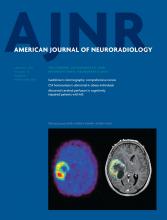Abstract
BACKGROUND AND PURPOSE: Two injectable materials for the treatment of vertebral compression fractures, Cortoss and PMMA, were compared in a prospective, randomized study. Our purpose was to analyze the incidence and nature of subsequent fractures following treatment, one of the secondary outcomes.
MATERIALS AND METHODS: A prospective study was conducted at 21 US sites by 38 investigators by using Cortoss randomized 2:1 to PMMA in 256 patients blinded to treatment assignment. Inclusion criteria were 1–2 osteoporotic fractures causing significant pain or worsening vertebral collapse on radiographs and visual analog scale pain measuring ≥50 mm. Assessments were conducted pretreatment, on treatment day, and at 7 posttreatment intervals. Imaging studies underwent independent blinded review. Internal and independent monitors, including the FDA, verified data.
RESULTS: Of the 256 patients, 45/162 Cortoss-treated (27.8%) and 30/94 PMMA-treated (31.9%) patients experienced new fractures, most within 30–365 days. In patients with 1 acute or subacute fracture and no previous fractures, subsequent fracture incidence was less in patients treated with Cortoss (17.6%) than with PMMA (27.3%). In this subgroup, adjacent fractures occurred in 10.3% of patients treated with Cortoss and 18.2%, with PMMA, a 43.4% lower incidence in the Cortoss group.
CONCLUSIONS: Compared with PMMA, Cortoss use resulted in fewer subsequent fractures, especially in patients with first fractures. In patients without previous fractures, the subsequent fracture rate was also lower in Cortoss-treated versus conservatively treated patients in other studies. This reduced subsequent fracture rate may be due to differences in the material and mechanical properties of Cortoss compared with PMMA. As finite-element analysis modeling demonstrated, Cortoss restores a more physiologic load transfer through the treated vertebra. Patients treated with Cortoss were less likely to be hospitalized for new fractures.
ABBREVIATIONS:
- AP
- anteroposterior
- FEA
- finite-element analysis
- IDE
- investigation device exemption
- PMMA
- polymethylmethacrylate
- VCF
- vertebral compression fracture
- © 2013 by American Journal of Neuroradiology












